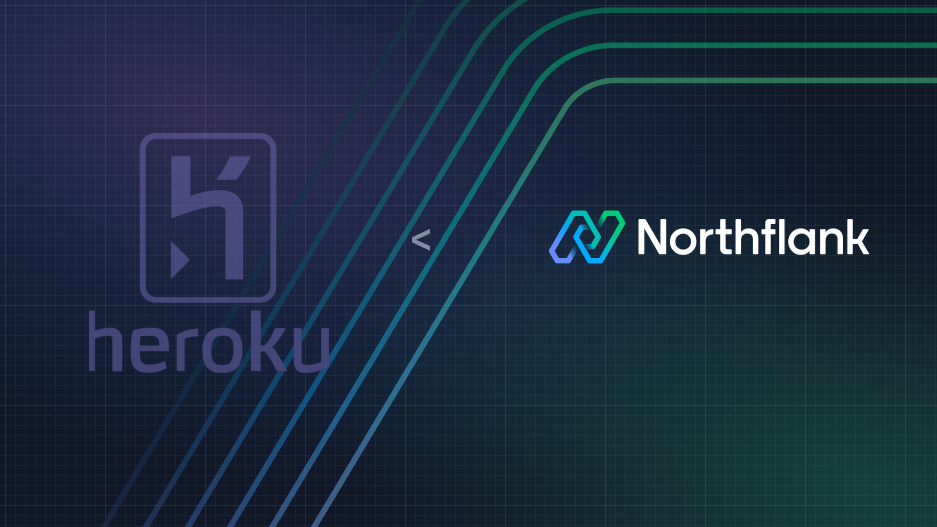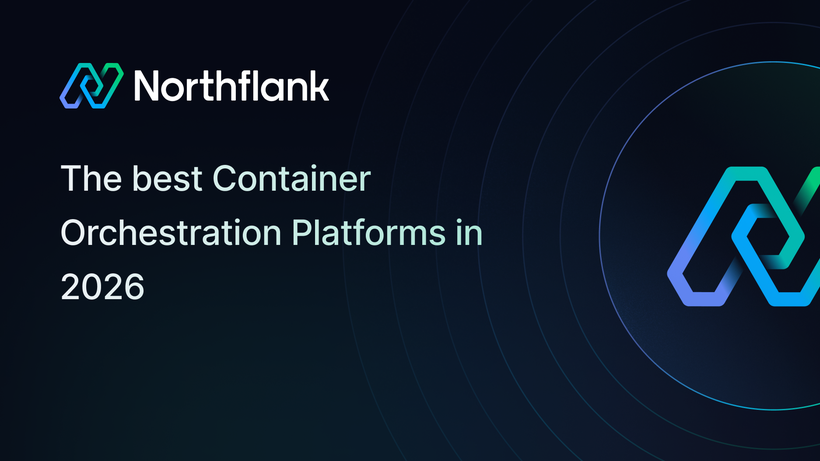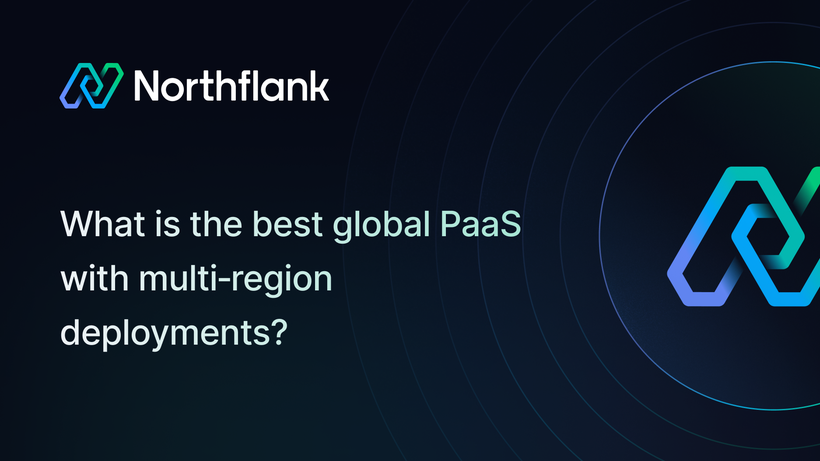

Top Heroku alternatives in 2025
When Heroku discontinued its free tier in late 2022, it marked the end of an era in cloud development. For over a decade, countless developers and startups had launched their first applications on Heroku's free dynos, drawn to its legendary simplicity and git-based deployments. Now, with even simple hobby projects requiring paid plans, developers are discovering that modern cloud platforms offer not just more competitive pricing, but also the sophisticated capabilities their growing applications demand. In this article, we'll explore the landscape beyond Heroku, examining platforms that combine the simplicity developers love with the advanced features today's applications need.
The landscape of cloud computing has evolved dramatically since Heroku's inception. Several factors are driving developers to explore other options:
- Rising costs drive change: After Heroku eliminated its free tier, many developers face significantly higher hosting expenses. While Heroku offers premium solutions through Heroku Enterprise and Heroku Private Spaces, these options start at several thousand dollars monthly and may be overkill for many teams. Organizations are discovering they can get similar enterprise features - like private networking, regional deployment, and advanced security - at more competitive prices through alternative platforms, making cost optimization a key factor in their migration decisions.
- Customization limitations: As applications grow more complex, developers find themselves constrained by Heroku's abstraction layer. Modern development teams need granular control over their infrastructure to implement specialized solutions and optimize performance, which Heroku's platform doesn't always accommodate. For example, developers can't directly manage container orchestration for custom scaling strategies, or modify low-level network configurations for specialized inter-service communication patterns.
- Evolving performance needs: Today's applications require sophisticated scaling capabilities and efficient resource management. While Heroku's traditional dyno-based system served well in the past, modern cloud platforms offer more advanced options for handling complex workloads and traffic patterns. Kubernetes has emerged as a powerful alternative, providing container orchestration that offers greater control over resource allocation, automated scaling, and self-healing capabilities that many growing applications demand.
- Bring your own cloud (BYOC): Development teams now prefer platforms that allow them to leverage their existing cloud infrastructure investments; unlike Heroku's AWS-only approach, contemporary platforms like Northflank enable developers to deploy applications across multiple cloud providers or their preferred infrastructure. This flexibility helps organizations maintain consistency with their existing cloud strategy while avoiding vendor lock-in.
- The graduation problem: As organizations grow, they find themselves needing to transition from platforms like Heroku to more robust managed cloud providers like AWS, GCP, and Azure. This "graduation" from Heroku to direct cloud provider services becomes necessary to gain deeper infrastructure control, cost optimization, and integration with cloud-native services. However, these transitions often prove challenging, requiring significant architectural changes and potential downtime, leading teams to seek more flexible alternatives that better align with their long-term cloud strategy.
Recent developer community discussions highlight Heroku's enduring strengths and growing challenges. Here's what developers are sharing about their experiences:
- Aisik_oduro shares a particularly negative experience with Heroku's billing practices.

- r_s, a developer, shares a nuanced perspective about Heroku's cost-benefit equation.

- Sleepyhead raises serious concerns about Heroku's reliability and support, particularly in Europe.

- Sad-Bobcat-2103 posted a more detailed critique: " Goodbye, Heroku. We're Breaking Up.”

These testimonials paint a picture of a platform that, while still valued for its ease of use, is facing significant challenges in meeting modern development needs and maintaining customer satisfaction.
When you're looking to move beyond Heroku, these eight essential factors will help you make the right choice for your team. Think of them as your checklist for finding a platform that matches Heroku's convenience and takes your development to the next level.
- Ease of deployment - Your new platform should make deployment feel like a breeze, just as Heroku did. Look for modern CI/CD pipeline support and container-based deployments that let you push code with confidence. The best platforms strike that sweet spot between simplicity and flexibility – they should handle the heavy lifting while still giving you control when you need it.
- Transparent pricing - Nobody likes surprise bills at the end of the month. The ideal platform offers crystal-clear pricing that grows sensibly with your needs. Watch out for platforms that hide costs in complicated usage metrics. You should be able to predict your monthly costs without needing a spreadsheet and a calculator.
- Developer experience - A platform's success often comes down to how it feels to use it day-to-day. Great documentation that answers your questions before you ask them, a CLI that feels like an extension of your fingers, and workflows that fit naturally with your existing tools – these aren't just nice-to-haves, they're essential for keeping your team productive and happy.
- Language and framework support - Your chosen platform should speak your language – literally. Whether you're running Node.js microservices or Python data processing jobs, make sure the platform not only supports your tech stack but understands its unique requirements. This includes having the right buildpacks, runtime environments, and framework-specific optimizations.
- Community and support - When you hit a roadblock, having a strong community and responsive support team can make all the difference. Look for platforms with active forums, comprehensive knowledge bases, and support teams that understand developer needs. A vibrant community often means better resources, more solutions to common problems, and faster issue resolution.
- Performance and reliability - Your applications need to run smoothly, consistently, and quickly. Evaluate each platform's track record for uptime, their global infrastructure coverage, and how they handle peak loads. The best platforms build on battle-tested infrastructure solutions like Kubernetes rather than reinventing the wheel, leveraging its proven reliability and robust container orchestration capabilities while adding their own value on top. Remember, the best performance metrics are the ones that match your specific use cases – a blog and an AI model have very different needs.
- Scalability - Your platform should grow with you, handling everything from your first user to your millionth without breaking a sweat. Look for platforms that leverage industry-standard solutions like Kubernetes for container orchestration, providing proven scaling capabilities, self-healing features, and automated load balancing without requiring manual intervention. The platform should make scaling feel like turning up the volume, not rebuilding the speaker.
- Security and compliance - Security isn't just a checkbox – it's a fundamental requirement. Your platform should offer built-in security features like SSL/TLS support, network isolation, and regular security updates. If you're handling sensitive data or operating in regulated industries, make sure the platform can meet your compliance requirements without excessive custom configuration.
- Bring your own cloud (BYOC) - Modern platforms should play well with your existing cloud infrastructure investments. Rather than creating proprietary systems, the best platforms build on top of industry standards like Kubernetes, allowing you to deploy across multiple cloud providers while maintaining consistent workflows. This approach lets you leverage your existing infrastructure expertise and relationships while preventing vendor lock-in and optimizing costs across different providers based on your specific needs.
- Simplification of day 2 operations - While initial deployment is important, the real test of a platform comes in its ability to streamline ongoing operations. Your chosen solution should simplify monitoring, logging, debugging, and maintenance tasks that occur after the initial deployment. The best platforms achieve this by building on top of battle-tested infrastructure like Kubernetes, adding value through integrated observability tools, automated backup solutions, and straightforward update processes that don't require extensive downtime or manual intervention. This approach turns the complexity of daily operations into manageable, automated workflows that let your team focus on building features rather than fighting fires.
Are you looking for a new home for your applications? Here are seven powerful alternatives that combine Heroku's simplicity with compelling modern features.
Northflank is a platform that enables developers to build, deploy, and scale applications, services, databases, and jobs on any cloud through a self-service approach. For DevOps and platform teams, Northflank provides a powerful abstraction layer over Kubernetes, enabling templated, standardized production releases with intelligent defaults while maintaining necessary configurability.
Northflank advances the legacy of pioneers like Heroku and Pivotal Cloud Foundry. While Heroku perfected the self-service developer experience, it didn't support complex workloads in enterprise cloud accounts. Cloud Foundry offered the right application abstraction to simplify complexity, but its underlying infrastructure proved costly and difficult to implement. Northflank delivers the best of both worlds: support for complex workloads, exceptional developer experience, and appropriate abstractions in your cloud environment—all within minutes and at a reasonable cost.

Key features:
- End-to-end CI/CD pipeline automation
- Built-in monitoring and logging
- Automatic horizontal scaling
- Private networking and VPC support
- Integrated secrets management
- Database as a Service
- Bring your own cloud (BYOC).
Pricing:
Northflank offers a generous free tier that includes deployment of 2 services, 2 jobs, and 1 addon. Users can connect their existing cloud account, with limited resources and plans available. A Pay-as-you-go Pro plan provides additional capabilities.
How does Northflank compare to Heroku?
- Market position: While Northflank hasn't achieved Heroku's level of recognition, it has earned the trust of prominent companies like Writer and Sentry, serving over 35,000 developers.
- Cost-effectiveness: Northflank's generous free tier and transparent pay-as-you-go pricing model offer better value, particularly for developers working on smaller projects or just starting out.
- Deployment flexibility: Unlike Heroku's AWS-centric approach, Northflank supports a broader range of cloud service providers, including AWS, Google Cloud Platform, and Azure.
DigitalOcean app platform is a PaaS solution built on DigitalOcean's robust infrastructure. It strikes an optimal balance between simplicity and control for growing applications.

Key features:
- Integrated CI/CD pipelines
- Automatic vertical and horizontal scaling
- Built-in monitoring and alerting
- Seamless integration with DigitalOcean's managed databases
- Global CDN support
Pricing:
DigitalOcean app platform includes a free tier supporting up to 3 static sites with 1GiB data transfer allowance per app. Paid plans begin at $5 per month with enhanced features.
How does DigitalOcean app platform compare to Heroku?
- While less widely recognized than Heroku, it maintains a growing user base
- Offers more competitive pricing
- Features a focused but expanding community
Render is a modern cloud platform that streamlines the hosting of web applications, static sites, APIs, and databases, providing automatic SSL certification and CDN integration.

Key features:
- Zero-downtime deployments
- Automatic HTTPS and DDoS protection
- Native SSD storage
- Pull request preview environments
- Custom domain support
Pricing:
Render provides a free tier for low-traffic applications, with paid plans starting at $19 per user monthly.
How does Render compare to Heroku?
- While Render's documentation isn't as extensive as Heroku's, it's well-maintained and growing
- Offers more competitive pricing across all tiers
- Features a smaller but carefully curated ecosystem of add-ons
4. Fly.io
Fly.io is a globally distributed application platform that positions your code closer to users, delivering exceptional performance without the complexity of traditional infrastructure management.

Key features:
- Intelligent global load balancing
- Integrated Postgres and Redis support
- Native IPv6 compatibility
- Docker-based deployment pipeline
- Extensive edge network coverage
Pricing: Fly.io maintains a free tier for low-traffic applications and implements a pay-as-you-go model for its Professional plans.
How does Fly.io compare to Heroku?
- Emphasizes performance optimization through advanced latency reduction techniques
- Provides automatic scaling based on demand, simplifying infrastructure management
- Implements comprehensive security measures, including firewalls, intrusion detection, and DDoS protection
Vercel is a cloud platform optimized for frontend frameworks and static sites, delivering exceptional performance and developer experience.

Key features:
- Advanced performance optimization
- Comprehensive serverless function support
- Integrated CI/CD pipeline
- Global edge network deployment
- Sophisticated analytics and monitoring
Pricing: Vercel's free tier accommodates frontend applications with up to 1,000,000 monthly requests. Premium plans start at $20 monthly with advanced features.
How does Vercel compare to Heroku?
- Specializes in frontend development and modern web applications
- Implements usage-based pricing for better cost control
- Offers unique capabilities, including edge functions, serverless previews, and global edge network distribution
Netlify is an innovative platform for modern web projects that seamlessly integrates CI/CD, serverless functions, and edge computing.

Key features:
- Git-based continuous deployment
- Integrated CDN with asset optimization
- Comprehensive serverless function support
- Built-in form handling and authentication
- Advanced split testing capabilities
Pricing:
Netlify offers a free tier for sites consuming less than 100 GB of monthly bandwidth. Premium plans begin at $19 monthly, supporting up to 1 TB of bandwidth.
How does Netlify compare to Heroku?
- Focuses primarily on static and JAMstack applications
- Provides specialized features for modern web development workflows
- Maintains competitive pricing with transparent bandwidth-based tiers
7. Platform.sh
Platform.sh delivers an end-to-end solution for building, deploying, and scaling web applications, with particular emphasis on enterprise requirements and multi-cloud deployments.

Key features:
- Flexible multi-cloud and multi-region deployment options
- Sophisticated environment management
- Comprehensive database and service support
- Enterprise-grade security features
- Automated DevOps workflows
Pricing:
While Platform.sh doesn't offer a free plan, it provides a 30-day trial period with full access to premium features. Detailed pricing information is available on their website.
How does Netlify compare to Heroku?
- More expensive than Heroku
- Advanced security features
- Built-in CI/CD pipeline
Heroku’s free tier was a game-changer for developers, and its removal pushed many to look for alternatives. While it was a great platform for getting started, the cloud landscape has evolved, offering more flexible, cost-effective, and powerful options. Whether you need better pricing, easier scaling, or more control over your infrastructure, there are plenty of platforms that can match or even surpass what Heroku offers. The best choice comes down to what works best for your projects and workflow—so explore, experiment, and find the right fit for you.



